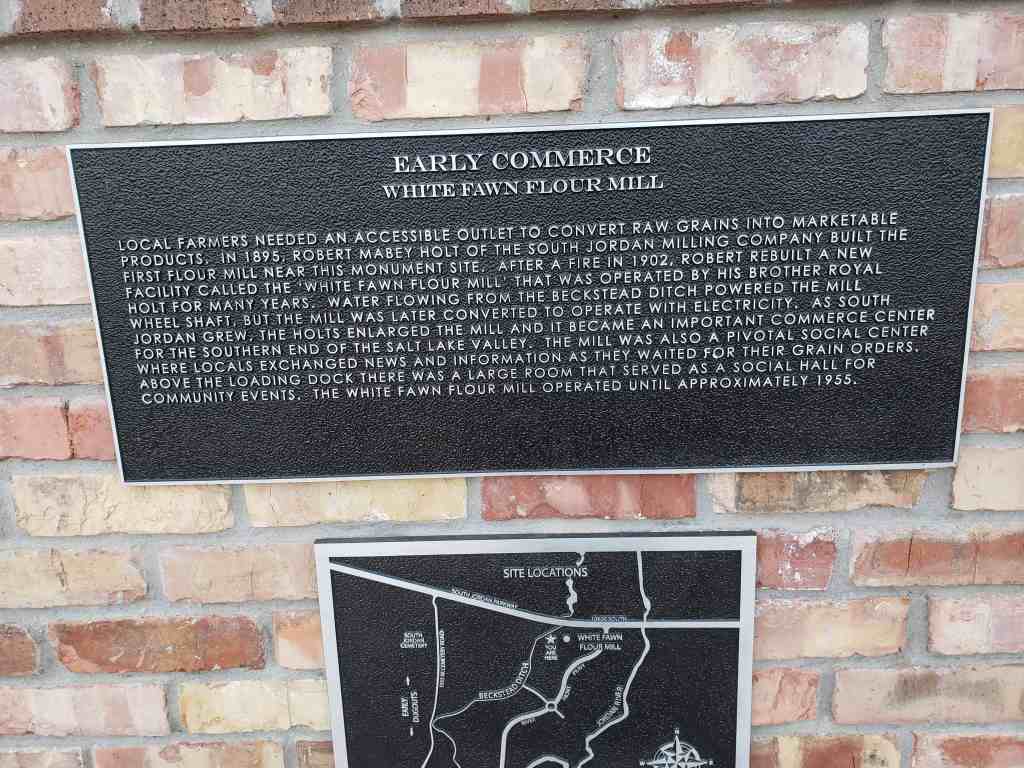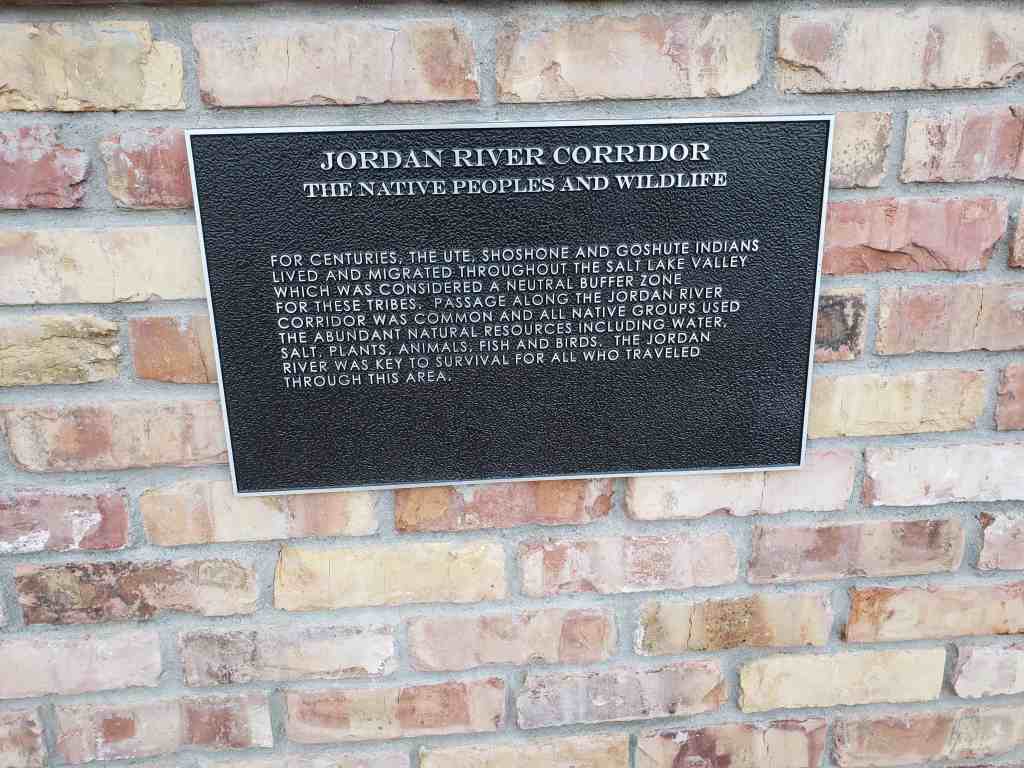Settlement in 1859
“Over Jordan and under the hill”
South Jordan was originally called “Gale” due to the strong, persistent winds. Since the Salt Lake Valley had little timber available, the earliest settlers built their first homes into the bluffs west of the Jordan River as earthen dugout dwellings. The Alexander Beckstead family was the first to homestead in this area in 1859, southwest of this monument. As a result, these and other settlers were known to live “over Jordan and under the hill.”
Water was scarce west of the Jordan River, so the pioneers hand dug an irrigation ditch over 2.5 miles long using shovels, picks, and spirit levels. This channel brought water northwest from Midas Creek, other tributaries and the Jordan River to the farmers for their crops of wheat, barley, and potatoes.
Early Commerce
White Fawn Flour Mill
Local farmers needed an accessible outlet to convert raw grain into marketable products. In 1895, Robert Mabey Holt of the South Jordan Milling Company built the first flour mill near this monument site. After a fire in 1902, Robert Rebuilt a new facility called the ‘White Fawn Flour Mill’ that was operated by his brother Royal Holt for many years. Water flowing from the Beckstead ditch powered the mill wheel shaft, but the mill was later converted to operate with electricity. As South Jordan grew, the Holts enlarged the mill and it became an important commerce center for the southern end of the Salt Lake Valley. The mill was also a pivotal social center where locals exchanged news and information as they waited for their grain orders. Above the loading dock there was a large room that served as a social hall for community events. The White Fawn Flour Mill operated until approximately 1955.
Jordan River Corridor
The Native Peoples and Wildlife
For centuries, the Ute, Shoshone and Goshute Indians lived and migrated throughout the Salt Lake Valley which was considered a neutral buffer zone for these tribes. Passage along the Jordan River corridor was common and all native groups used the abundant natural resources including water, salt, plants, animals, fish and birds. The Jordan River was key to survival for all who traveled through this area.













Thank you for your info about the mill. I was writing a history of Thomas Holt, who also worked at the mill.